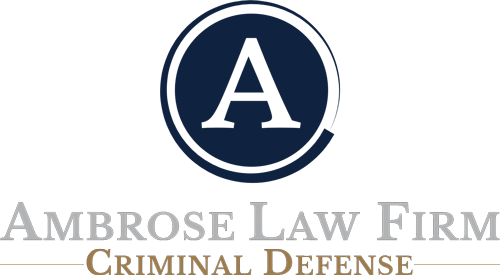[column width=”1/3″ title=”” title_type=”single” animation=”none” implicit=”true”]
Recently, the supreme court determined part of Minnesota’s disorderly conduct statute is unconstitutional.[1] Prior to this decision, you could commit disorderly conduct in several ways: three separate clauses in one subdivision give many avenues that can lead to you breaking the law. Some of these you would never consider to be remotely criminal. Did you ever think you could be arrested for interrupting a group of friends meeting at a coffee shop for speaking too loudly on your cell phone? Prior to Hensel, those were plausible outcomes.
So, what did Ms. Hensel do that was disorderly? While attending her local City Council meeting in Little Falls, she protested by placing large signs over her head. These signs, along with one attached to her head, caused obstructive views for other members of the community attending the City Council meeting. Due to these views being obstructed, and Ms. Hensel refusing to put the signs down, the meeting was adjourned and rescheduled. At the postponed meeting, Ms. Hensel conducted herself in a similar fashion. This time, drawing attention from the Little Falls City Attorney, who warned that she could be arrested for disorderly conduct if she did not cease her protesting. Eventually, after refusing to leave the City Council meeting or cease her actions, Ms. Hensel was escorted out of the room and charged with disorderly conduct.
After reading this brief layout of what happened to Ms. Hensel, you may be curious to know what makes a protest a crime under the disorderly conduct statute. The second clause made it a crime when:
Whoever does any of the following in a public or private place, including on a school bus, knowing, or having reasonable grounds to know that it will, or will tend to, alarm, anger or disturb others or provoke an assault or breach of the peace, is guilty of disorderly conduct, which is a misdemeanor: disturbs an assembly or meeting, not unlawful in its character.
This basically means that anyone who disturbs a lawful meeting of people, even a meeting consisting of two people, can be arrested under this crime if they disturb or interrupt in a way that they know, or should know, could halt the meeting. If you are thinking that this law could trigger arrests for: speaking too loudly on a cell-phone in a coffee shop; playing a video too loud in a communal office; or the numerous other every-day activities that could constitute a disturbance, then you are thinking similarly to the Minnesota Supreme Court.
In Hensel, the court held that clause 2 of subdivision 1 of the disorderly conduct statute was impermissibly overbroad and since no reasonable narrowing construction could be made, it was determined unconstitutional. When a law, statute, or other government mandate regulates speech or conduct that is protected under our constitutional rights, the courts will use what is called “strict scrutiny”[2] in determining if it should be permissible. Here, the statute’s subdivision was constitutionally overbroad because it included protected speech and expressive conduct within its coverage. Additionally, there was no reasonable narrowing construction prohibiting “disturb[ing]” assemblies or meetings, so the only remedy available was invalidation of the statute. The court was addressing the concern that it would be unconstitutional to allow a statute to block individuals from doing every day activities that would only be considered a crime if someone else determined that activity to be one of disturbance. The major concern being that “disturbance” can mean so many things, and be interpreted in many ways.
Even though part of the disorderly conduct law was found unconstitutional, it is important to remember that charges for disorderly conduct under the other two clauses of subdivision 1 can still occur[3]. However, this ruling in Hensel leaves the door open for more defendants to challenge the constitutionality of the statute on the grounds of constitutional overbreadth and vagueness, which the courts will likely have to consider.
Alec Rolain is a 2L at Mitchell Hamline School of Law in St. Paul, Minnesota. Prior to law school, Alec attended St. Mary’s University of Minnesota in Winona where he played baseball and made the MIAC all-sportsmanship team. He is currently a law clerk with Ambrose Law Firm, PLLC. St. Paul Criminal Defense Lawyer; Criminal Defense Attorney Minnesota; and St. Paul MN DWI lawyer.
[1] State v. Hensel struck down Minn. Stat. 609.72, subd. 1(2).
[2] Strict Scrutiny: The most demanding standard of judicial review used by courts. Requires that the law or policy being challenged supports a compelling governmental interest, is narrowly tailored to achieve that interest, and is the least restrictive means available to achieve that interest.
[3] (1) engages in brawling or fighting; and (3) engages in offensive, obscene, abusive, boisterous, or noisy conduct or in offensive, obscene, or abusive language tending reasonably to arouse alarm, anger, or resentment in others.
[column parallax_bg=”disabled” parallax_bg_inertia=”-0.2″ extended=”” extended_padding=”1″ background_color=”” background_image=”” background_repeat=”” background_position=”” background_size=”auto” background_attachment=”” hide_bg_lowres=”” background_video=”” vertical_padding_top=”0″ vertical_padding_bottom=”0″ more_link=”” more_text=”” left_border=”transparent” class=”” id=”” title=”” title_type=”single” animation=”none” width=”1/1″ last=”true”]
[text_divider type=”double”]
REQUEST A FREE CONSULTATION
[/text_divider]
[column_1 width=”1/1″ last=”true” title=”” title_type=”single” animation=”none” implicit=”true”]
[contact-form-7 id=”9392″ title=”FREE REQUEST FORM”]
[/contact-form-7]
[/column_1]
[blank h=”30″]
[/blank]

